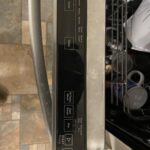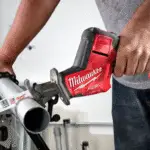You’re standing in your kitchen, staring at your Whirlpool dishwasher. The lights are on, but it just won’t start.
Frustrating, right? This common issue has left many homeowners scratching their heads, wondering what could possibly be wrong. You depend on your dishwasher to save time and keep your kitchen running smoothly. When it refuses to cooperate, it’s not just a minor inconvenience—it’s a disruption to your daily routine.
But don’t worry, you’re not alone, and there’s a solution waiting for you. We’ll unravel the mystery behind why your Whirlpool dishwasher lights are on but it won’t start, guiding you step-by-step to get it back in action. Ready to dive in? Let’s solve this puzzle together and bring back the convenience you deserve.

Credit: www.whirlpool.com
Common Causes Of Dishwasher Startup Issues
When your Whirlpool dishwasher lights are on but it won’t start, it can be frustrating. Understanding the common causes of startup issues can help you troubleshoot effectively. Knowing these causes is essential for a quick fix.
Power Supply Problems
A faulty power supply might be the reason your dishwasher won’t start. Check if the power cord is plugged in securely. Ensure the outlet is working by testing it with another appliance. Sometimes, a tripped circuit breaker can cause power issues. Reset the breaker and see if the dishwasher starts.
Door Latch Malfunction
The door latch plays a crucial role in starting your dishwasher. If the door isn’t closed properly, the dishwasher won’t start. Inspect the latch for any damage or debris. Clean it to ensure it locks tightly. A malfunctioning latch often needs replacement.
Control Panel Errors
Control panel errors can prevent your dishwasher from starting. Check for error codes on the panel display. Refer to your manual to understand the codes. Resetting the control panel might resolve the issue. Turn off the dishwasher and unplug it for a few minutes.
Water Supply Issues
Water supply problems can stop your dishwasher from starting. Ensure the water valve is open and the hose is not kinked. Check the water pressure; low pressure can cause startup issues. Inspect for any leaks in the water supply line.

Credit: www.whirlpool.com
Checking The Power Supply
Imagine this: you’re all set for a cozy evening, but your Whirlpool dishwasher, with its lights on, refuses to start. It’s frustrating, right? One of the first steps to troubleshoot this issue is checking the power supply. This might sound basic, but often, the simplest things can solve the biggest problems. A thorough inspection can be your first move in bringing your appliance back to life. Let’s dive into how you can ensure your dishwasher has the power it needs to operate smoothly.
Inspecting Electrical Connections
Start by examining the electrical connections. This is like checking if your phone charger is properly plugged in when your device doesn’t charge. Are the wires connected securely? Loose connections can prevent your dishwasher from starting. You might need to unplug and then plug the dishwasher back into the outlet. Sometimes, a little wiggle is all it takes to secure a connection.
Testing The Outlet
Next, test the outlet. You can do this by plugging in another appliance. Does it work? If not, you’ve found your culprit. Outlets can wear out over time or be switched off accidentally. Use a simple electrical tester, available at most hardware stores, to check if the outlet is live. A dead outlet could mean you need an electrician’s help.
Resetting The Circuit Breaker
Finally, head to your circuit breaker. Perhaps the dishwasher tripped the breaker during its last cycle. Find the corresponding switch and reset it. A simple flip might be all it takes. Sometimes, power surges or electrical hiccups can cause a breaker to trip. This is why resetting it can often solve the problem quickly.
So, next time your dishwasher acts up, remember to check these power supply elements. Could it be that your dishwasher is just asking for a little electrical attention? These steps are easy, quick, and might just be the solution you need.
Assessing The Door Latch
A dishwasher that won’t start can be frustrating. Lights are on, but nothing happens. The problem may lie with the door latch. This small component plays a big role. It ensures the door is closed securely. This safety feature prevents water leakage. Let’s delve deeper into examining and replacing this crucial part.
Examining The Latch Mechanism
First, check the latch for visible damage. Look for cracks or breaks. Is the latch loose or misaligned? These are signs of trouble. Gently close the dishwasher door. Listen for a clicking sound. This sound indicates the latch is working. No click means the latch might be faulty.
Next, inspect the latch’s connection to the control panel. A poor connection can stop the dishwasher. Check for loose wires or broken clips. Tighten any loose connections. If the problem persists, the latch may need replacement.
Replacing A Faulty Latch
Replacing a faulty latch is straightforward. You’ll need a screwdriver and a new latch. First, turn off the power to the dishwasher. Safety is important. Open the dishwasher door and locate the screws on the inner panel.
Remove these screws carefully. The latch will be accessible now. Disconnect the wiring harness. Remove the old latch and set it aside. Install the new latch by reversing these steps. Connect the wiring harness securely.
Finally, reattach the inner panel screws. Turn the power back on. Test the dishwasher by closing the door. Listen for the click to ensure proper installation. The dishwasher should start if the latch was the issue.
Evaluating The Control Panel
Evaluating the control panel of a Whirlpool dishwasher can pinpoint issues preventing it from starting. Lights may be on, yet the appliance remains inactive due to control panel errors. Identifying these errors is crucial for restoring normal operation.
Evaluating the control panel of your Whirlpool dishwasher can be a game-changer when the lights are on, but nothing happens. It’s the brain of your appliance, managing all commands. If it’s not working, your dishwasher won’t either. Understanding how to troubleshoot the control panel can save you time and money. Let’s dive into the specifics.Identifying Error Codes
When your dishwasher refuses to start, error codes can be your guiding light. They help pinpoint the issue, making your life a lot easier. You might see codes like F1 or E2. These codes typically indicate specific problems with sensors or wiring. Always refer to your user manual for an accurate list of error codes. Have you ever noticed how a simple error code can prevent an unnecessary service call? Just imagine the satisfaction of solving it yourself with a little detective work.Resetting The Control Panel
Sometimes, a simple reset is all your control panel needs. Start by unplugging your dishwasher for a few minutes. This action can clear any temporary glitches that might be causing the problem. Think of it as rebooting your computer to fix minor bugs. Have you tried this simple trick before, only to find your dishwasher suddenly cooperating again? It’s a handy little secret worth remembering.Repairing Or Replacing Control Board
When resets and error codes fall short, it might be time to consider repairs. A malfunctioning control board can be the culprit. You can attempt a repair if you’re comfortable with basic tools. Otherwise, replacing the control board might be necessary. Have you ever wondered if investing in a replacement could extend the life of your dishwasher? Sometimes, it’s the best way to ensure your appliance continues to serve you well. Evaluating your control panel not only empowers you but can keep your dishwasher running smoothly. What solutions have you discovered in your own troubleshooting adventures?Investigating Water Supply Issues
Whirlpool dishwashers might have lights on, but not start washing. One common cause is water supply issues. Proper water flow is crucial for the dishwasher’s function. Checking the water supply can solve the problem.
Checking Water Inlet Valve
The water inlet valve controls water entry into the dishwasher. Ensure it is not blocked or damaged. Locate the valve under the dishwasher. Inspect it for any visible debris or damage. Clean or replace the valve if needed. A faulty valve can prevent water from entering.
Ensuring Adequate Water Pressure
Water pressure affects the dishwasher’s performance. Low pressure can stop the machine from starting. Check your home’s water pressure using a pressure gauge. The pressure should be between 20 and 120 psi. If it’s too low, adjust the water supply settings. Contact a plumber for help if necessary.

Credit: www.youtube.com
Additional Troubleshooting Tips
Experiencing issues with your Whirlpool dishwasher lights on but not starting? Check the door latch for proper closure. Examine the control panel for any error codes. Resetting the dishwasher by unplugging it for a few minutes might help.
When your Whirlpool dishwasher lights are on but it won’t start, it can be frustrating. You might feel like you’ve tried everything, yet the issue persists. Before giving up, consider these additional troubleshooting tips. They might just hold the key to getting your dishwasher back in action.Inspecting For Blockages
Begin by checking for any blockages that might be disrupting the dishwasher’s operation. Open the dishwasher and look at the spray arms. Sometimes, small items like food particles or utensils can block these. Run your hand under the bottom rack to ensure nothing is obstructing the path. Blockages here can prevent water from spraying correctly, stopping the cycle before it even begins. Have you ever found a rogue piece of plastic lodged in a spray arm? It happened to me, and clearing it was all it took to get my dishwasher running again.Cleaning Filters And Drains
Filters and drains can become clogged over time, especially if you don’t regularly clean them. Remove the bottom dish rack and locate the filter at the bottom of the dishwasher. If it’s covered in grime, a quick clean might be all you need. Rinse the filter under warm water and use a soft brush to remove any stubborn debris. Next, inspect the drain for any blockages. A blocked drain can stop your dishwasher from starting, as it can’t cycle the water properly. Is there a buildup of gunk in the drain? Clear it out and see if that helps. By taking these simple steps, you may solve the problem without needing professional help.If these tips don’t work, it might be time to consult a professional. But before you do, why not double-check these areas? Sometimes the solution is simpler than we expect.
Frequently Asked Questions
Why Is My Whirlpool Dishwasher Not Starting?
The door might not be closed properly. Check if it’s latched securely. Power issues can also cause this problem.
How Do I Reset My Whirlpool Dishwasher?
To reset, press and hold the “Start” button for three seconds. This can clear minor glitches.
Could A Faulty Door Latch Stop My Dishwasher?
Yes, a faulty door latch prevents the dishwasher from starting. Ensure it’s working correctly or replace it if needed.
What Should I Check If Lights Are On But Not Starting?
Inspect the power supply, control lock, and door latch. These are common issues causing this problem.
Can A Power Outage Affect My Dishwasher?
Yes, power outages can reset settings. Ensure the dishwasher is properly plugged in and restart it.
Conclusion
Fixing a Whirlpool dishwasher can seem tricky. Don’t worry, though. By following some steps, you’ll often find the solution. Check power connections and door latch first. Look at the control panel for errors. Resetting the dishwasher might help too. These small checks often solve big problems.
If the issue persists, consider professional help. Remember, regular maintenance prevents many issues. Keep your dishwasher clean and in good condition. This ensures it runs smoothly for years. Troubleshooting can save time and money. Your dishwasher will work like new again.
Keep calm, and follow these steps.





